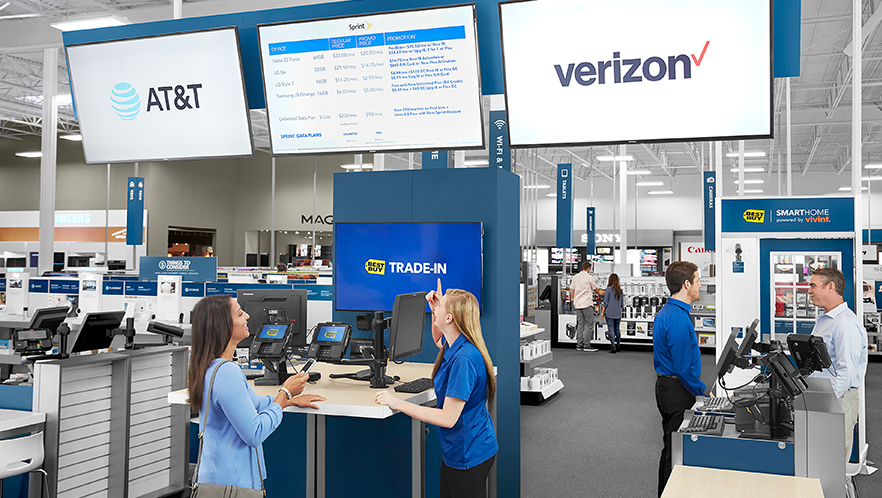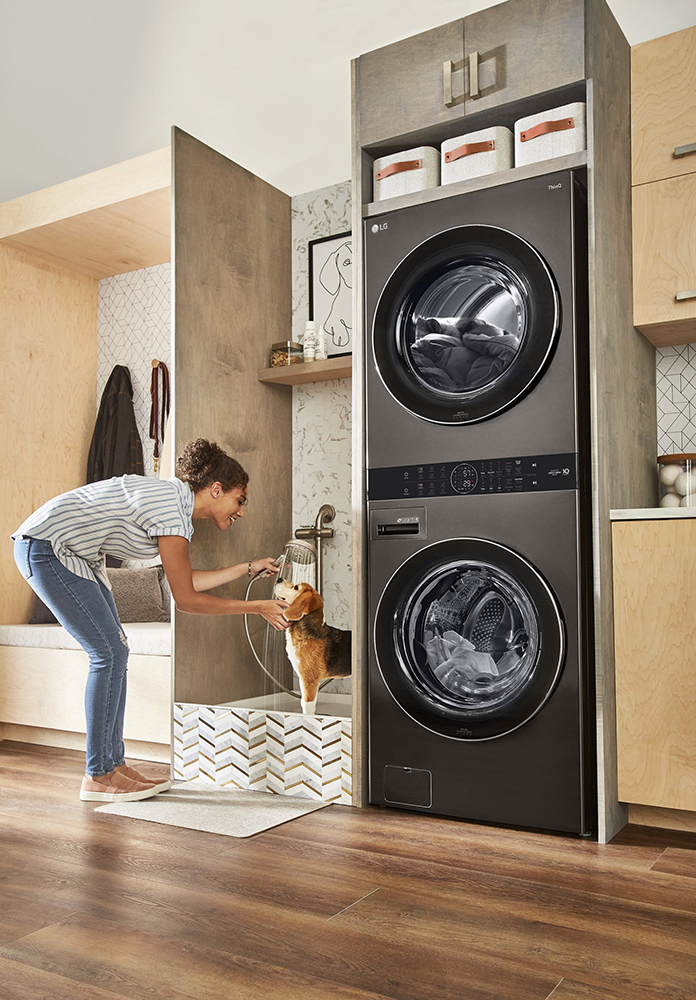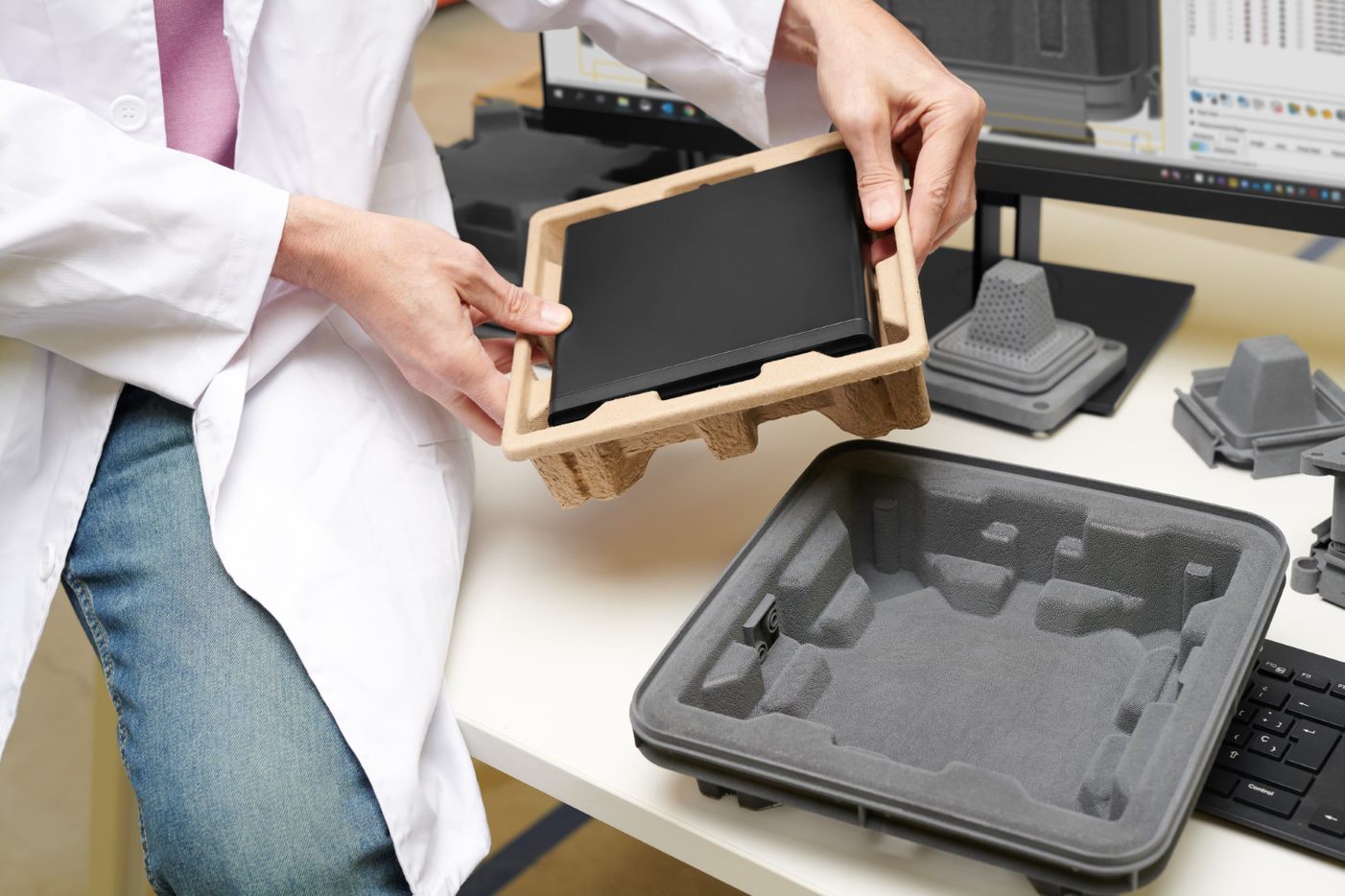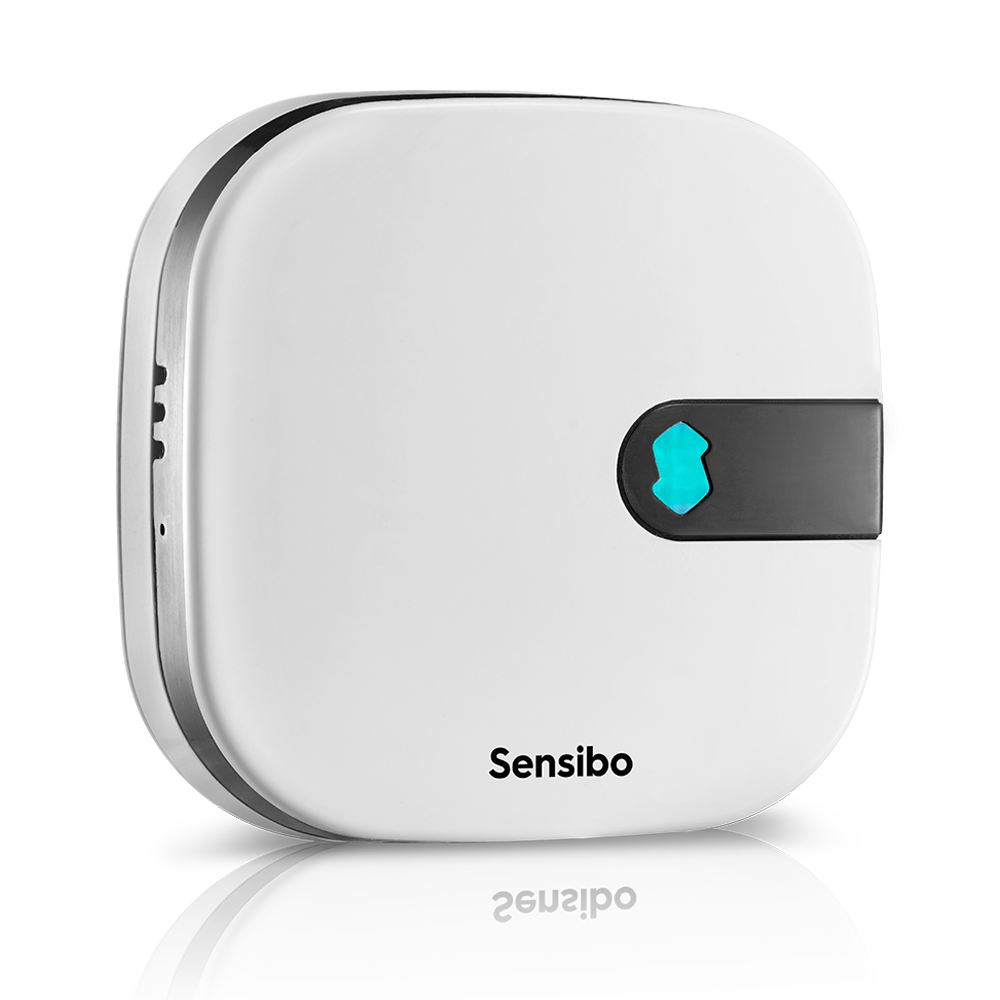Sustainability is such a buzzword these days that it can seem meaningless, especially when big tech and retail talk pledges to reduce emissions, invest in eco-technologies, or pay for carbon offsets. But brush off those self-satisfied marketing messages and seemingly hyped-up initiatives as just more “greenwashing” would be a mistake, especially for the retail sector. On a straight-up, save-the-Earth level, it’s essential: In January, research by the Boston Consulting Group and the World Economic Forum found that eight supply chains, including electronics, freight, and automotive, accounted for more than half of all global emissions. That’s why big retail from Amazon to Best Buy to Walmart, along with appliance and consumer electronics manufacturers, are doubling down and accelerating their sustainability initiatives.
Another motivator, of course, is the Paris Climate Agreement, which the United States recently rejoined, and its goals of reducing global emissions in half by the end of this decade. But the Paris Climate Agreement is not even the most ambitious of accords, some of which are coming from the private sector. Just last month, a consortium of tech companies including Dell, Google, Microsoft, and Vodafone, announced the formation of the Circular Electronics Partnership (CEP). This new platform aims to encourage, facilitate, and invest in systems that develop and implement “closed-loop” products and services — think recyclable packaging, materials, and gadgets — in the electronics sector.
But it’s not just a concern for the environment: Not only is it estimated that unchecked climate change will affect the bottom line — approximately $1 trillion is at risk due to climate change through 2024 per 215 global companies surveyed in a 2019 CDP report — but consumers young and old also increasingly demand sustainability when shopping. Over the past year of mostly mail-order e-commerce, more than 72 percent of Americans said they would be more likely to buy from companies that have sustainable shipping practices, according to a 2020 Harris Poll, while a 2020 IBM and National Retail Federation study found that 70 percent of shoppers in the U.S. and Canada place a high value on eco-friendly brands.
And there’s progress from the consumer technology sector. Even though the consumer electronics industry grew by 11.4 percent between 2017 and 2018, it was responsible for 7.4 percent fewer emissions, according to the Consumer Technology Association (CTA).
These days, it’s hard to find a company in any sector that hasn’t deployed some kind of sustainability practice — just go to that tab on its website and you’ll find an entire section devoted to eco-practices. That goes for many appliance and CE manufacturers and retailers, as the entire subsection on sustainability at CES 2021 demonstrated. Some companies in this sector have been focused on sustainable practices for more than a decade, while others are just getting started. Here are some current highlights in the space.
Trading Out and In
Best Buy has singularly addressed its role as an electronics retailer in the proliferation of e-waste by leading on eco-trends for more than a decade; its well-known trade-in and recycling program has processed more than two billion pounds of both appliances and electronics since it was first launched in 2009. The program is the largest electronics and appliances program in the U.S. and also the most comprehensive: In exchange for gift cards on newer products, anyone can trade-in or submit a wide range of items including TV and audio, cell phones, cameras, car audio, CDs and DVDs, and appliances. For ink and toner, the store will provide $2 in credit toward the next purchase. And even though it’s not free, Best Buy makes disposing of bigger items a cinch with its haul-away service that’ll go to homes and pick up everything from big TVs treadmills to dishwashers and wall ovens.

The store has added a boatload of additional initiatives over the past 10 years, including a special shopping category devoted to sustainable products, a marketplace for pre-owned refurbished gadgets, energy-saving LED lighting in its stores, and a fleet of hybrid GeekMobile vehicles for its GeekSquad house calls.
Corporate Collaboration
As with many tech companies of late, Best Buy has also signed on to The Climate Pledge, a global pact among companies to reduce carbon emissions to net-zero by 2040. Founded by Amazon and political and communications strategy organization Global Optimism, the Pledge has already been signed by 31 companies, including other tech firms such as IBM, Microsoft, Rubicon, Schneider Electric, Siemens, and Verizon — all of which have agreed to collaborate on the 2040 goal by updating their business and manufacturing methods, as well as quantifying, sharing, and offsetting their greenhouse emissions “Our ambition in joining forces with Jeff Bezos and Amazon was to get large, tip-of-the-spear companies together at a pre-competitive level to establish a framework for cutting operational emissions across supply chains with the greatest ambition,” says Global Optimism’s founding partner, Tom Rivett-Carnac, who previously worked the Paris Climate Agreement in his capacity as Executive Secretary at the UN Climate Convention. “Time represents ambition because it improves the chances of staying below 1.5 °C (34.7 °F), according to scientists.”
Besides its work on The Climate Pledge, Amazon is active on many sustainability fronts around electronics and appliances, including reducing the immense amount of waste inherently involved in shipping packages. As anyone who has ever had to pry open a shrink-wrapped box containing a smartphone or earbud can attest, e-commerce and consumer electronics businesses — despite some advances in eco-packaging — still use a lot of cardboard, plastic, polystyrene, and paper to store and transport products in a safe way.
Amazon has cut down the packaging it uses by 900,000 tons, or about 1.6 billion shipping boxes, since 2008.
In addition to making packages and product boxes easier to open, Amazon’s Frustration-Free Packaging program collaborates directly with manufacturers on innovative e-commerce-optimized packaging designs that reduce the use of materials. For example, Hasbro, which started phasing out plastic packaging in 2020, developed with Amazon a sustainable, mail-order-friendly container-cum-shipping box for its Baby Alive doll that reduces the open space around the toy inside and eliminates the see-through plastic window, which is no longer necessary since it won’t be sitting on a store shelf. Corporate collaborations such as these have helped the e-tailing giant cut down the packaging materials it uses by 900,000 tons, about the same as 1.6 billion shipping boxes.
On a product level, the Amazon-owned Ring has recently released a series of nifty solar-powered products, including a solar panel to power its Spotlight Camera, a solar charger to power the Ring Video Doorbell, and the new, motion-sensitive Smart Lighting Solar Pathlight, several of which can be staked into the ground to illuminate walkways with no need for complicated wiring or custom installations.
What about all those carbon-emitting delivery trucks that aren’t doing climate change any favors? As part of its Climate Pledge activities, Amazon bought 100,000 electric vans from Rivian to use in its home delivery operations. Already the Rivian delivery EVs are rolling out in Los Angeles and San Francisco, with plans to get 10,000 on the road in 16 U.S. cities by the end of 2021. With Tesla and GM working on higher-capacity battery platforms and bigger electric vehicles, it’s only a matter of time before getting delivery ceases to be a carbon-emitting issue.
Supplier Side Sustainability
While it hasn’t signed the Climate Pledge, another e-commerce and big-box giant, Walmart, has been working on sustainability initiatives since 2005, when it set a goal to one day transition to 100 percent renewable energy. Through investments in renewable energy technologies and companies, along with upgrading to solar- and wind-power infrastructure at many of its stores, Walmart is moving forward on its goal to get to at least 50 percent renewable energy by 2025.

Part of the solution not only for the renewable energy goal but also broader aim to achieve net-zero emissions by 2040 is Walmart’s Project Gigaton, which is a coordinated and collaborative program to help the company’s more than 3,000 third-party suppliers implement everything from eco-packaging and e-waste management to energy efficiency and climate-friendly manufacturing and supply chain upgrades. At his CES 2021 keynote in January, Walmart CEO Doug McMillon detailed his vision for the company not only as a force for carbon offsets to zero out emissions, but also as a regenerative company that would proactively help reverse climate change.
Independent Thinkers
But it’s not just big-box stores that are leading the charge. Many independent retailers have been But it’s not just big-box stores that are leading the charge. Many independent retailers have been more quietly but consistently running sustainability practices throughout their operations. Crutchfield, for example, eschews polystyrene packing peanuts in favor of corn-and-potato-starch-based biodegradable peanuts, which it manufactures on-site from expandable pellets that have an added cost-saving bonus: They use less truck space on deliveries than pre-made polystyrene peanuts. In addition, Crutchfield ships all of its purchases with Packsize’s On Demand Packaging tool, which ensures that products are shipped in the smallest possible box size. Smaller freight sizes, whether from expandable pellets or smaller boxes, means fewer trucks and therefore reduced diesel emissions in general.
‘When a box is in pristine condition, it just seems it’s something that shouldn’t just be thrown away,’ says HiDEF Lifestyle President Aaron Sholtis.
In addition to next-gen, eco-friendly packing materials, there is plenty of actionable low-hanging fruit with the boxes being used already. Audio-video retailer HiDEF Lifestyle, for example, reuses boxes that contained shipments to its facilities for sending out products to customers. “If we order a case of Sony car receivers, they’re going to ship eight or 20 in a box,” says HiDEF Lifestyle President Aaron Sholtis. “We’re not going to ship car stereos in that box again, but a receiver might fit in there perfectly. We won’t send something out that’s been used five times already, but so many manufacturers over-box their products when they send them, and when a box is in pristine condition, it just seems it’s something that shouldn’t just be thrown away.” Sometimes, the circular economy is right in front of you.
Phasing Out of Upgrade Mania
There are more than five billion, and counting, mobile phone users in the world, according to GSMA Research, and it’s estimated that 151.8 million phones are thrown away each year in the U.S. alone. These statistics are not lost on consumer electronics manufacturers, which also have to contend with all the waste that comes with cardboard and plastic packaging.
“What I’ve seen over the last decade is an awareness and acknowledgment of climate change and a commitment to doing something about it across the industry,” says Walter Alcorn, vice president of environmental affairs at the Consumer Technology Association (CTA). “That’s new, and there is now a consensus in the technology industry that not only is this a global crisis, but also that we as an industry have a responsibility to do something about it.” Indeed, one of the main themes at this year’s virtual iteration of CES was sustainability, and many of the show’s biggest exhibitors — Microsoft, Samsung, LG, GM, Schneider Electric, Bosch, Panasonic, and Mercedes-Benz, to name just a few — were demonstrating their carbon- and electronic-waste technologies and strategies.

When the Samsung Upcycling program launches later this year, consumers who are planning to replace their Galaxy smartphones will have the option to download software to repurpose and convert their smartphones into everything from baby monitors to motion sensors for activating lights. There’s nothing new about using your old phone as a music player or security camera, but by simply offering software for that very purpose, Samsung is making the process user-friendly, enticing, and seamless. Earlier this year at CES, Samsung also announced that its innovative eco-packaging, whereby boxes containing products can be easily repurposed into small-scale furniture, would be rolled out to its audio products, computer monitors, and QLED and UHD televisions (see sidebar).
A Cleaner Way to Clean Clothes

Besides the cursory commitments of carbon-reduction and the like, LG has always been on the cutting edge of efficiency in its appliances, from refrigerators and air conditioners to refrigerators and washing machines. Its recent line of ThinQ appliances includes the LG WashTower, an all-in-one unit that uses AI to optimize washing cycles, drying temperatures, and more to not only save water and energy, but also wear-and-tear on clothing.
Besides electronics and appliances, LG is also a player in solar energy. Its LG Business Solutions division recently unveiled two new solar panels, both of which are aimed at homeowners, at the virtual International Builders’ Show.
Something Old, Something New
PC and PC peripheral manufacturers also lead the way when it comes to sustainability, in particular with “closed-loop” circular practices. HP, for example, has run its Plastic Partners recycling program since 1991. The closed-loop program accepts various types of plastic — bottles, apparel hangers, and printer ink cartridges — then recycles the plastic and reuses it in new printer ink cartridges. In addition to printer ink cartridges, HP now also incorporates recycled plastic into hardware, including the HP Tango printer, the HP Elite Dragonfly laptop, and HP Pro desktops and laptops, to name a few. Last year, the company unveiled new biodegradable packaging made from molded fiber, which itself is created out of paperboard, newspaper, bamboo, and wheat straw.

At CES this year, Dell, which has been incorporating recycled carbon fiber and other material into its laptops for the past decade, introduced a line of commercial laptops — the Latitude 5000 and Precision 3560 series — both of which feature lids made from a new bioplastic polymer and bodies made from recycled plastic. And Razer, which makes high-performance gaming laptops, headsets, and mice, announced at the end of March that all of its products would be made from recycled plastics and use FCS-certified biodegradable packaging. Logitech, which also makes keyboards, mice, and other peripherals for gaming and work, announced a similar initiative in 2019, with goals to incorporate recyclable materials in all of its products by 2030.
Going Green from the Ground Up

Big companies and their flashy pledges about carbon offsets, eco-investing, and climate neutrality goals aside, several startups and smaller companies are walking the walk with products that are designed to be sustainable from the ground up or help manage resources better. Sensibo, for example, is an innovative, user-friendly, and inexpensive system of Wi-FI-connected sensors that not only let you remote control your existing “dumb” air conditioners remotely via Alexa, Google Assistant, and Siri, but automatically maintain temperatures (thanks to a combination of real-time, cloud-connected weather information, as well as built-in motion and temperature sensors). The company also makes a line of air purifiers that behave similarly based on real-time outdoor air quality reports. Meanwhile, Goal Zero has long made a line of solar-panel-embedded chargers, power stations, and lights, among other products, that have been a favorite of adventurers, campers, and disaster preppers alike. Founded by veterans of Mophie, which made innovative portable chargers and batteries, Nimble is an eco-first manufacturer of sustainable charging products.
‘What we’re seeing with a lot of, let’s say, new companies, is that they’re doing cooler stuff and are willing to put money into innovation, and to new ideas coming out,’ says Dr. Deborah Brosnan.
“What we’re seeing with a lot of, let’s say, new companies, is that they’re doing cooler stuff and are willing to put money into innovation, and to new ideas coming out,” says Dr. Deborah Brosnan, whose eponymous scientific consulting firm pools government, business, and communities to address environmental and climate change crises. That innovation extends to software companies that power retail experiences. It doesn’t always have to be massive or cost $1.2 billion, as is the case with Amazon’s Climate Pledge Fund. Shopify, for example, has established a Sustainability Fund, which invests in truly next-gen approaches that aren’t your typical carbon offset program. Case in point: The e-commerce platform invested in Running Tide, an organization that grows kelp and submerges it to the bottom of the ocean, where it sequesters carbon for thousands of years, at scale, for much less than building a pricey wind or solar farm, as every behemoth retailer from Amazon to Best Buy to Walmart has done.
Actual and vital need aside, sustainability has become such the norm in any corporate organization and messaging that sometimes it runs the danger of being just theater, or “greenwashing.” Pledging to carbon offsets is great, but it’s not always stopping the original carbon-emitting practice that it’s offsetting. Moving the needle on climate change takes more than sustainability pledges and eco-investments; it requires monitoring, transparency, and cooperation among the private and public sectors. “There has been a great deal of greenwashing over the years — now is the time for real action,” says Rivett-Carnac. “We have the tools, technologies, and resources to make the changes to operations — there is very little we don’t yet have or cannot collectively develop and invest in.”















